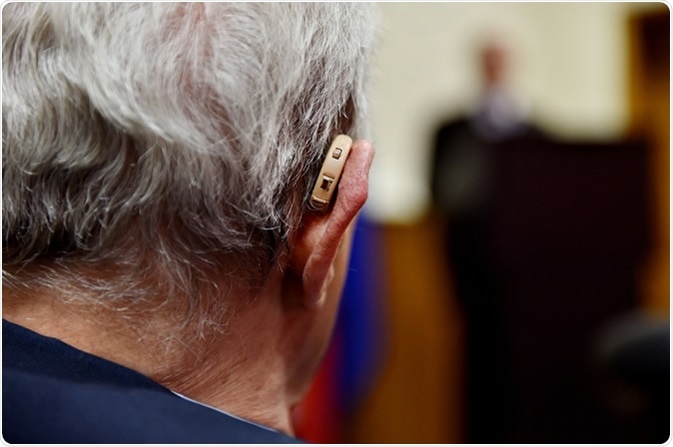For All The Latest Medical News, Health News, Research News, COVID-19 News, Dengue News, Glaucoma News, Diabetes News, Herb News, Phytochemical News, Cardiology News, Epigenetic News, Cancer News, Doctor News, Hospital News
Deafness can happen at any time during a person’s life. Hearing loss may be present in a baby whose family may have no history of deafness, while a grown-up may develop hearing loss as a result of some trauma or infection.
The ear is divided into the outer ear, middle ear and inner ear. There are two types of hearing loss possible: sensorineural and conductive. Sensorineural hearing loss, also known as nerve deafness, is caused due to the inadequate function of the cochlear portion of the inner ear, while conductive hearing loss is caused by the inability of sound to pass from the outer ear to the inner ear.

Hearing loss may occur in a child due to different factors. It may be genetic, in which case a parent or grandparent may have been suffering from hearing loss and the faulty gene is passed along to the child. There is also the possibility that the combination of the parental genes may cause hearing loss in the child.
Another reason for hearing loss in children could be complications during pregnancy or birth. For instance, premature birth, or rubella infection during pregnancy, can cause deafness. The child may also develop illnesses such as mumps, measles and meningitis that can affect the hearing. In an adult, the hearing loss may be the result of a traumatic injury or a side effect of an infection.
Parental consent is necessary to screen a child for hearing loss. Many hospitals may have global consent for newborn screening procedures, but parental refusal for any procedure must be respected. Ideally the first screening is performed before the newborn is one month old.
Both ears need to be screened as sometimes the baby may suffer from unilateral hearing loss. This means that hearing in one ear is normal, while the second ear suffers from hearing loss. All screening should be done with appropriate decontamination of the equipment. Cleaning, disinfection and sterilization is a must as the equipment is used multiple times. This practice is to prevent bodily injury as well as transmission of communicable infections to the person who is being screened.
Based on the diagnosis of the hearing loss, the audiologist will recommend whether a hearing aid is likely to be of use to the person or not. Hearing aids are small, battery-operated gadgets that are worn in the ear to enhance hearing. Should the child need a hearing aid, the audiologist will create a mold of the child’s ear to get the exact shape and size.
The ear mold is the portion of the hearing aid that fits into the child’s ear. Once the ear mold is ready there will be an appointment to fit it and check if it is painful or uncomfortable for the child to wear. The calibration of the device will come next. Hearing tests will already have been conducted to check for the different pitches and sounds that are comfortable for the child.
The hearing aid will be calibrated to ensure that soft sounds are amplified and loud sounds are compressed, so that the child hears sounds in a comfortable range. However, as the child grows older, the fine-tuning of the hearing aid will continue so as to provide the best hearing experience to the child.
There are different types of hearing aids. The Behind the Ear or BTE types have a tube or ear mold that sits inside the ear with the remaining portion being behind the ear. In the Bone Anchored Hearing Aids or BAHA there is a permanent surgical implant in the bone behind the ear.
The Contralateral Routing of Signals or CROS and BiCROS hearing aids are used by those with unilateral hearing loss. These merely transmit sound from the side required but not to the good ear. Hearing aids are constantly being developed as technology advances, and new innovations are incorporated regularly.
The hearing aid is a very delicate instrument and needs to be cared for with great deliberation. It should be kept away from moisture, grime or dirt. The child will need to be shown how to carefully store the hearing aid when it is not in use. The parent will have to keep track of the battery as well as the calibration of the aid till the children are old enough to do so on their own.
Wearing a hearing aid can be the cause of some psychological problems. Being different is never easy as a child and the hearing aid can underline that difference severely. The child should be provided counseling and support to handle any self-esteem issues that crop up from having a hearing loss and needing to wear a hearing aid.